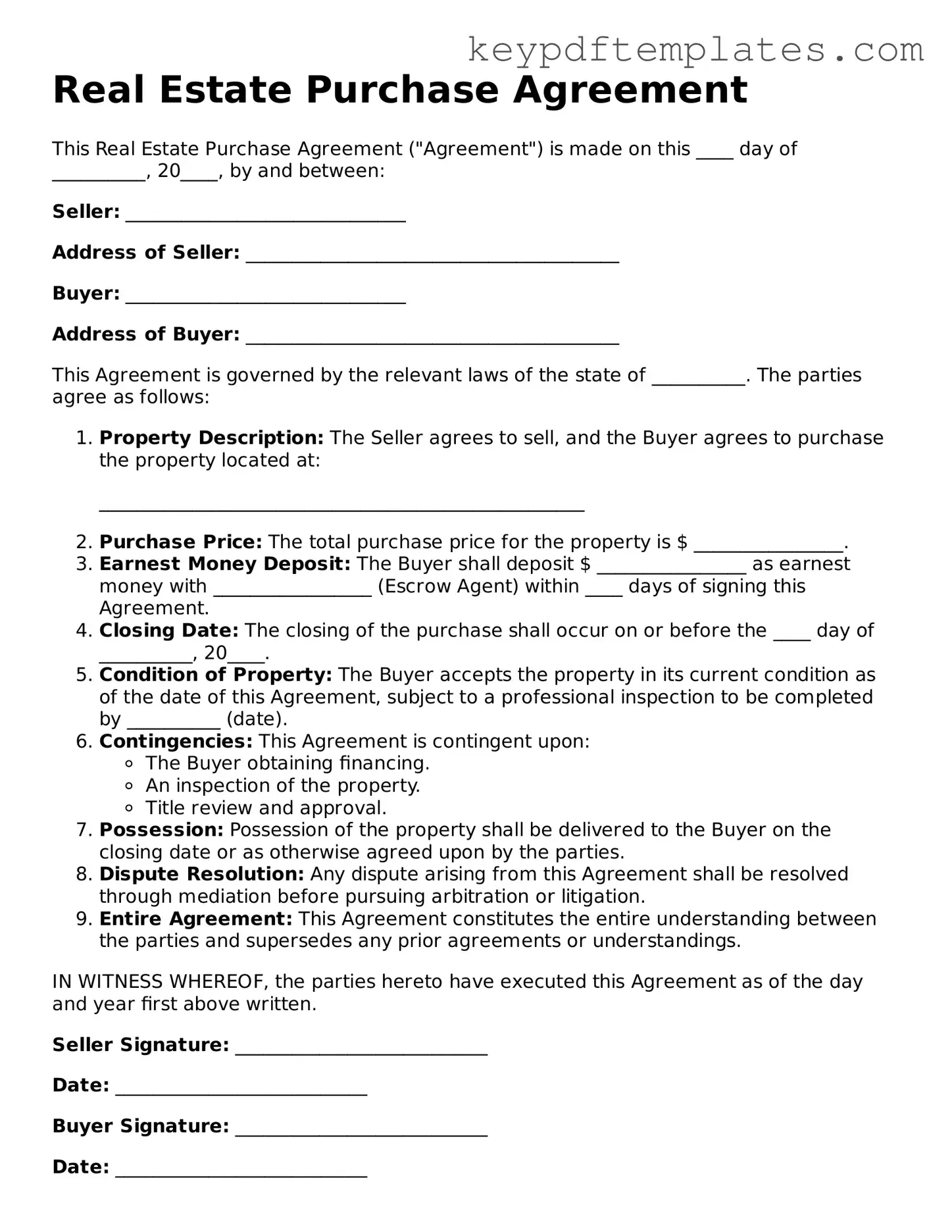Printable Real Estate Purchase Agreement Template
A Real Estate Purchase Agreement is a legally binding contract that outlines the terms and conditions for the sale of real property. This document serves as a crucial step in the home-buying process, ensuring that both the buyer and seller understand their rights and obligations. Understanding this form can help prevent disputes and facilitate a smoother transaction.
Modify Document Online
